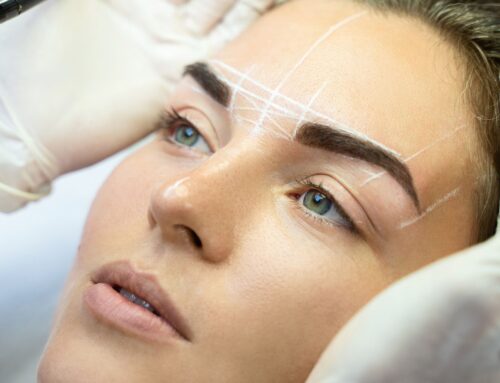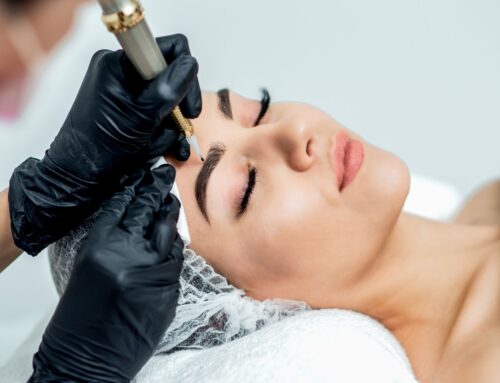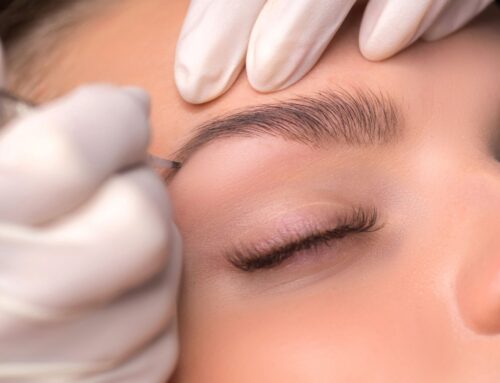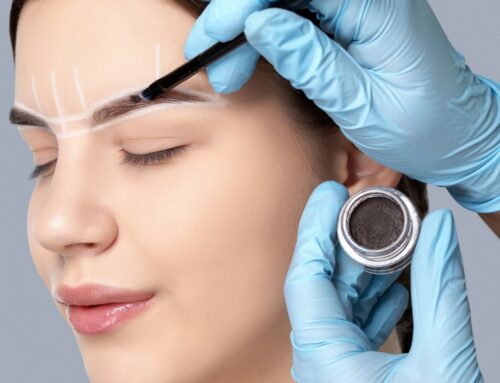Microblading disasters are a nightmare not just for the client involved, but also for the artist. And if you’re an aspiring microblading technician, such mishaps can be costly, both in terms of the damage done to your reputation and in terms of the money you might lose. Thus, to make sure you’ll never find yourself in such a situation, here are 11 tips you should always keep in mind while performing this delicate procedure.
Tip #1: Make Sure You Have Adequate Practice
So you’ve finished your microblading training course and you’ve already got your certificate in hand. You might be tempted to start offering your services to clients immediately, but hold on for a minute!
It’s crucial that you have a certain amount of experience under your belt before working with real customers. You might be able to do a great job on a practice dummy, but the results with a live person could be a whole microblading disaster. So make sure you’ve had plenty of time to perfect your technique before taking on any clients.
Tip #2: Show Your Client Your Past Works
Once you’ve landed a client, the next step is to show them your portfolio. This will give them a good idea of the kind of results they can expect from you and it will also help to build trust between the two of you.
Remember, as an artist, you’re always selling yourself and your work. So make sure that everything in your portfolio is high quality and that it accurately reflects your skills as a microblading technician.
Tip #3: Talk to Your Client About Their Expectations
90% of microblading disasters could have been avoided if the client and the artist had simply talked to each other about their expectations. So before you even start the procedure, make sure you have a clear understanding of what the client is hoping to achieve.
Are they looking for a subtle enhancement or do they want a more dramatic change? What eyebrow shape do they prefer? Does it suit their face shape and the vibe they’re going for? If you don’t want your client to have any regrets after the procedure, make sure you have all these questions answered before you start.
Tip #4: Let Your Client Know About the Possible Side-Effects
Your client has every right to know what could go wrong during and after the microblading procedure. So make sure you spell out all the potential side-effects, both short-term and long-term.
Some of the most common side effects include swelling, redness, and itching. But in some cases, there could also be more serious complications, such as infection or permanent scarring. So make sure your client is fully aware of all the risks involved before they decide to go ahead with the whole process.
Tip #5: Microblading Disasters: Know Your Client’s Skin Type
Not all skin types are created equal and not all skin responds well to the microblading pigment and numbing cream. So to avoid a microblading disaster, it’s important that you know your client’s skin type before starting the procedure.
If they have very sensitive skin, for example, you might want to use a gentler numbing cream or apply the numbing agent for a shorter amount of time. Knowing their skin type also lets you decide better on what kind of microblading needles to use. For example, if they have oily and thick skin, you might want to use one with a metal or aluminum base. This will ensure that the pigment goes in more easily and that there is less risk of it migrating to other areas of the face.
Tip #6: Ask the Right Questions
Apart from knowing their skin type, make sure you know other important details about your client, such as their age and health history. This is especially important if they have any pre-existing conditions that could impact the procedure.
For example, if they have a history of keloid scarring, you might want to reconsider doing the microblading procedure. Or if they’re pregnant or breastfeeding, you’ll need to take special precautions to avoid any adverse effects.
Tip #7: Use the Correct Tools & Pigment
One of the most common causes of microblading disasters is using the wrong tool or pigment. So make sure you’re using the correct ones for the job.
The pigment should be of the highest quality and should be specifically formulated for use in microblading. As for the tools, make sure you’re using a high-quality needle that is sharp and has a smooth edge. This will help to ensure a more precise and accurate application of the pigment.
Tip #8: Take Your Time With the Procedure
This isn’t MasterChef. Your clients won’t expect you to finish everything and give them gorgeous eyebrows in just 60 minutes. So take your time with the procedure and make sure you’re applying the pigment evenly and accurately.
If you’re rushed or if you’re trying to do too many procedures in a day, it’s going to show in your work and lead to a whole microblading disaster. This is why it’s so important to set realistic expectations with your clients and to let them know that the procedure will take a few hours to complete.
Tip #9: Ask Your Client for Immediate Feedback
Once the procedure is finished, ask your client for immediate feedback. This will help you to determine if there are any areas that need more pigment or if the shape needs to be tweaked a little bit.
Your client’s satisfaction is key, so make sure you’re always open to their feedback and willing to make adjustments, as needed.
Tip #10: Educate Your Client About the After-Care Process
Successfully finishing the procedure doesn’t mean you and your client have dodged the bullet. In fact, the majority of microblading disasters only occur after the procedure is finished.
This is why it’s so important to educate your clients about the after-care process to avoid microblading disasters. Make sure they know how to take care of their eyebrows and what to expect in terms of side effects and healing time. Give them a detailed outline of the 30-day post-treatment journey and what to do if they experience any adverse effects.
Tip #11: Follow Up With Your Client
Even if the procedure goes perfectly, it’s still important to follow up with your client a few days after the treatment. This will help to ensure that they’re happy with the results and that there are no adverse side effects.
It also gives you an opportunity to answer any questions they may have about the post-care process. If you’re not able to follow up with them in person, send them a detailed email outlining everything they need to know.
Learn the Ropes of Microblading Like a Pro!
As an aspiring artist, microblading disasters would be the last thing you want to worry about. So make sure you’re well-equipped to avoid them by following the tips outlined above.
And if you want to learn more about the craft, our advanced microblading experts can teach you everything you need to know. Train with only the finest artists of Dallas and get certified through our online, in-person, and corrections courses. Enroll now and we’ll make sure you enter the industry with confidence and the right skills to create beautiful eyebrows that will leave your clients happy and satisfied!
More like this:
Earn With Microblading From Home—8 Steps To Start Your Own Profitable Business
Complete Your Cosmetic Tattoo Supplies With These 8 Quick Tips
Microblading Needles Explained: Your Quick Guide to Choosing the Right One 2022
Dallas Cosmetic Tattoo Training 2022: Your Ultimate Guide To A Successful Career In Permanent Makeup
5 Tips to Finding the Best Type of Numbing Cream For Your Next Microblading Session
Fixing Bad Microblading 101: A Microblading Student’s Quick Guide
Microblading Training Kit: A Comprehensive Guide
If You’re A Salon Owner, Get Microblading Training Dallas Immediately
Who Can and Can’t Get Microblading
You can also read through our Client Feedback here.






